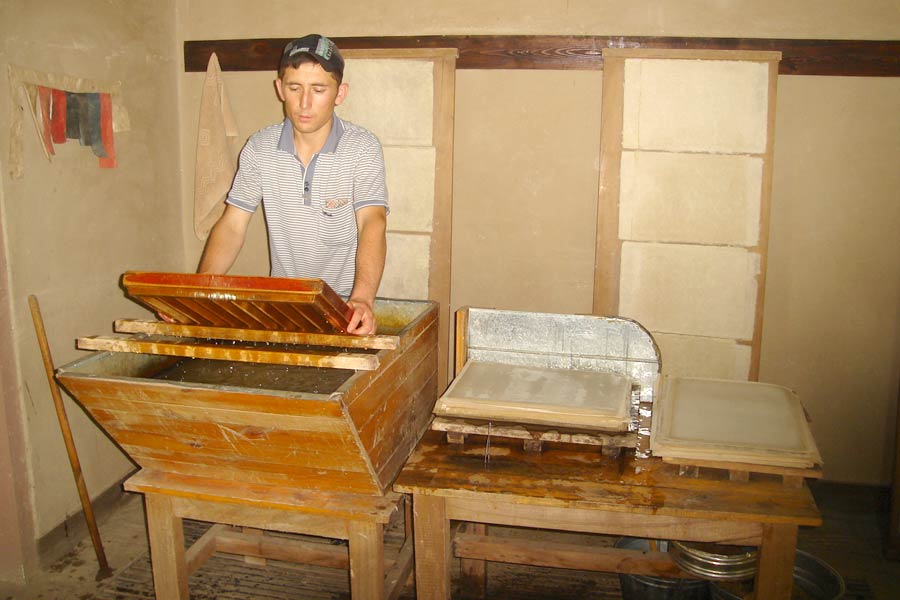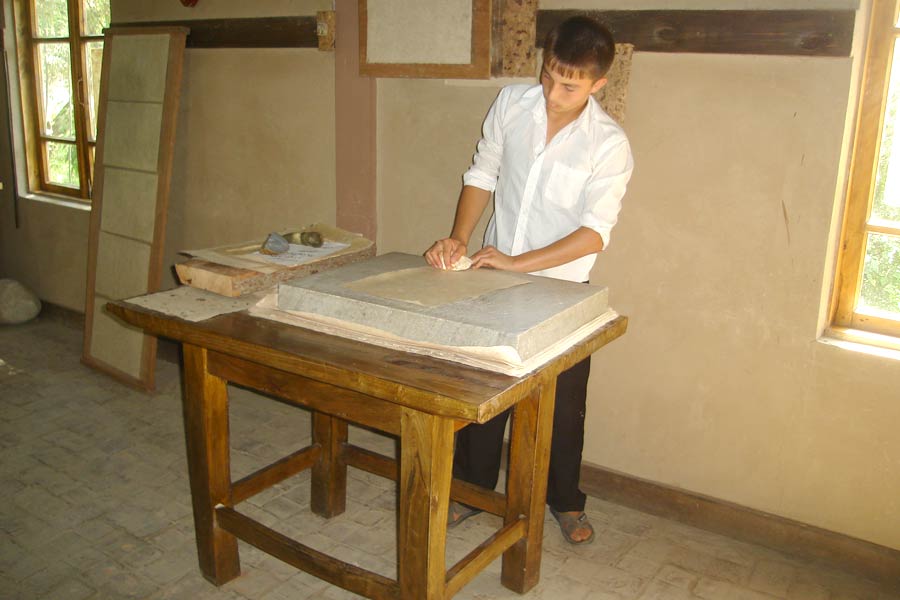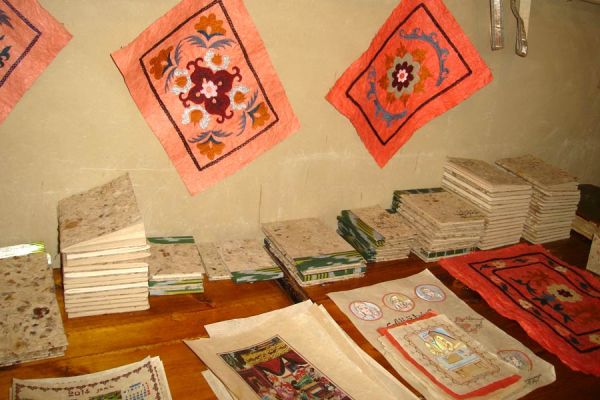Samarkand paper workshop "Meros"
The Meros Association (translated as "heritage") is a group of enthusiasts who, with the support of international organizations and sponsors, have revived the ancient craft of Samarkand. The Association acquired a plot of land in the vicinity of Samarkand on the banks of the Siab River. Here they built workshops and a small watermill.
Today, you can visit the Meros workshop as a tourist, or order paper production from them. The paper factory in Samarkand even works with government orders, because what is written on such paper lasts longer. The production is carried out using ancient technologies using precisely reproduced mechanisms of the Middle Ages. At that time, Samarkand was one of the Asian centers of paper production.
In the Middle Ages, there were several different types of paper:
"Samarkand sultan kogozi" is a snow—white paper called "Sultan's", it was distinguished by its softness and thinness.
Samarkand shoyi kogozi is a light yellow paper, smooth and thin (the name translates as "silk".
Mir Ibrahimi is a paper with watermarks depicting a white ring.
"Nimkanop" is a brown paper. It is made by mixing bast fiber with silk waste.
History
The writing paper produced by Samarkand craftsmen became widely known in many Arab countries, as well as in most European countries, in the middle of the 9th century. The highest conditions have always been placed on the quality of handwritten paper. The paper should be durable, soft, and comfortable when writing.
The quality of the writing paper produced in the Samarkand workshop fully met all the requirements: it was exceptionally smooth, showed itself well in writing, and its excellent density prevented large amounts of ink from being absorbed. And its brown shade, slightly contrasting with the ink, is very convenient when reading.
Cotton, mulberry bark and silk threads were used in the production of paper. The main secret of creating Samarkand paper was the use of mulberry bark. Paper, thanks to its fibers, became incredibly silky, which allowed this unique product to enter the world market. Paper production in the city did not last long. Due to the wars between Samarkand and Bukhara, and then the invasion of the Dzungars, production was destroyed and technology was forgotten.
The ancient technology was restored at the initiative of UNESCO. For this purpose, ancient documents were brought up and the preserved copies were studied. Then the developments were tested during long-term experiments (for 10 years), until the masters achieved an ideal result completely identical to the ancient technology.





















